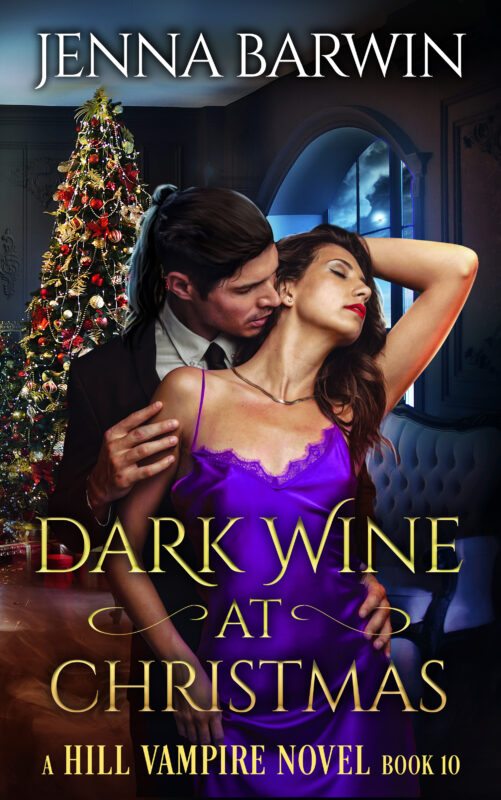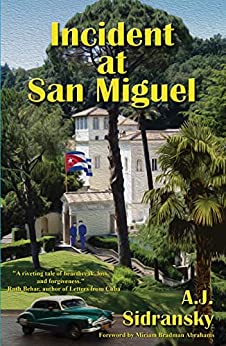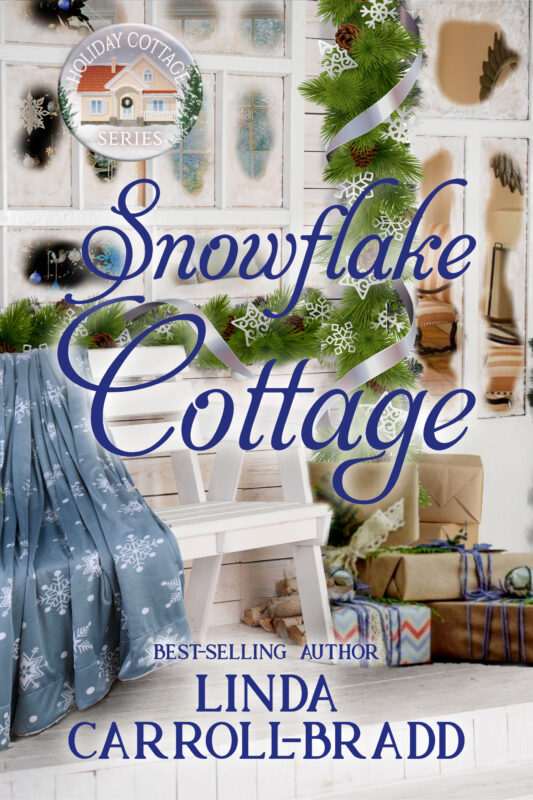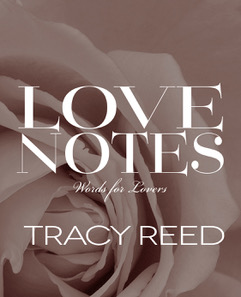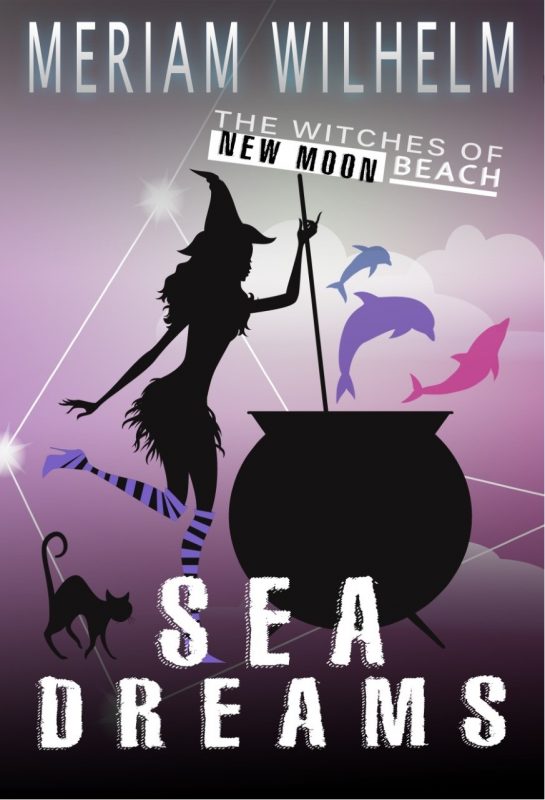Full of Scorpions Is My Mind by Dianna Sinovic
December 13, 2025 by Bethlehem Writers Group in category From a Cabin in the Woods by Members of Bethlehem Writers Group tagged as Bethlehem Writers Group LLC, Dianna Sinovic, Macbeth, Something wicked this way comes, weird sisters
My long relationship with “the Scottish Play” dates back to grade school, when I was assigned the role of one of the Weird Sisters (was the teacher trying to tell me something?). Two other girls and I paraded around a faux cauldron to intone those famous lines:
Double, double, toil and trouble;
Fire burn and cauldron bubble.
I’m pretty sure my class did not stage the entire five acts of Macbeth, which seems too macabre for that age group. But I suppose that early exposure to the witches/weyward ones led me to my writing path of paranormal and horror.
Seeing the play again recently reminded me how powerful it is, and how it still speaks to the human condition and the ability of power to corrupt. It is, according to Meghan Winch writing in the Lantern Theater’s program, “about an unfit and unaccountable ruler seizing power from the rightful sovereign” and illustrates that “the people below suffer most when there is instability at the top.” Stuff right out of today’s news feeds.

The play is also full of evocative phrases that live on even today, more than 400 years later: “when the battle’s lost and won”; “what’s done cannot be undone”; “I bear a charméd life,” and “the milk of human kindness,” among others. One particular phrase, in a line delivered by Macbeth, had special relevance to me as a mystery writer: malice domestic. These days it’s the name of an annual crime fiction fan convention.
The Lantern Theater in Philadelphia is an intimate space, a theater in the round; the onstage sparring with spears and swords took place only a few feet from the theatergoers. The aisle one seat to my right was a key passageway during the production: Macbeth and his Lady ran up that aisle, to murder Duncan, the king, and Macduff used it to discover the dead body. Settled in a front-row corner, I was so close to the action that I was probably the only audience member who could see the apparitions in Act IV, as they stood “hidden” behind a scrim to speak their lines.
And speaking of lines, a play (Shakespearean or not) embodies the oft-repeated “rule” in writing fiction: show, don’t tell. On the stage, dialogue and action are everything; there is no room for exposition. We understand the story via the words the characters speak and how others on stage react.
Regarding those infamous weird sisters, they seem to be more than mere witches. The lines they speak weave an incantation via the rhyme, the alliteration, and the strangeness of the words themselves. “Weird” from Shakespeare’s time did not mean “strange.” It stemmed from “wayward,” which referred to “destiny” or “fate.” As such, did the sisters make Macbeth commit the murderous crime? Or did that tendency lie within him all along?
That’s for you to decide.
By the pricking of my thumbs,
Something wicked this way comes.
Dianna’s Books
BWG’s Books
A Memory of Gratitude by Carol L. Wright
November 13, 2025 by Bethlehem Writers Group in category From a Cabin in the Woods by Members of Bethlehem Writers Group tagged as Bethlehem Writers Group LLC, Carol L. Wright, From Scratch, gratitude, Sally W. Paradysz
The other day, I was thinking about how this regular “A Slice of Orange” column by members of the Bethlehem Writers Group (BWG) came about. It all began when one of our members, Sally W. Paradysz, wrote a monthly memoir/meditation from her “Cabin in the Woods” of Bucks County, Pennsylvania. When she started her regular contributions, she had already been diagnosed with Stage 4 cancer, but she didn’t waste her precious remaining time bemoaning her condition. Instead, she found many things for which to be grateful.

Bethlehem Writers Group was one thing she was thankful for until the end of her life. She was one of our founding members and grew as a writer during her years among us while helping other members to grow as well. I have always been grateful for Sal’s friendship and the time we had together.
After Sal’s passing in 2017 at the age of 77, other BWG members began writing their own thoughts for “A Slice of Orange” to fill the vacancy she left behind. You’ve seen us write original fiction, advice on writing, and thoughts on life.
Now, in the season for thankfulness, I want to honor Sal and share some of the many things that she appreciated most about this season–things that gave her life joy, love, and purpose. Below is a list of ten things I remember Sal being grateful for in this Thanksgiving season.
10. The fall palette that enhances Pennsylvania’s hills and woodlands, painting the trees in oranges, reds, yellows, browns, and greens against a clear blue sky in a natural masterpiece.
9. The scent of autumn after leaves have fallen when the air is crisp. It provokes a sense of anticipation of the changes to come: the bite of cold, a peaceful snowfall, and the contentment of being at home, snuggled under a blanket, stroking a cat, and reading a favorite book.
8. The trees that fell to give Sal a source of warmth through the colder months. Sal heated her house with a wood stove which gave a glow and fragrance that enriched the feeling of home. She thanked the trees for that gift.
7. The harvest that enhanced Sal’s vegetarian diet with fall flavors of squash and other vegetables that warmed the body and the heart.
6. The farewell honking of geese as they flew south for the winter. The songbirds that sang their gratitude for the many birdfeeders she filled as winter approached and food sources became increasingly scarce.
5. Deer and other wildlife, wearing their winter camouflage, that frequented her land, giving her a glimpse of stillness and beauty before disappearing into the gray-brown woods. Sal often wrote about the deer that eventually learned to trust her instead of fleeing from her presence.
4. The pets that owned her. Sal loved her gigantic Maine Coon cats. These long-haired beauties are friendly, vocal, loyal, and affectionate, even if they can be a lot to pick up and carry very far. They sometimes weigh in at over twenty pounds each.
3. The innumerable friends that shared parts of her journey, helping each other through the highs and lows, brightening joys and lightening sorrows. Sal’s heart was big enough to welcome friends wherever she went.
2. Family. Sal adored her children and grandchildren, appreciating each for their unique specialness. And, after a difficult marriage that ended in divorce, Sal found a true partner with whom to share the rest of her life. She was so very grateful for these much beloved people.
1. The blessing of a long life, affording opportunities to develop into her best self, to learn and grow, to become the published author she aspired to be . . . and to share these blessings with her readers from her cabin in the woods.
More of Sal’s Books
More of Carol’s Books
And the Winners Are . . .
June 13, 2025 by marianne h donley in category From a Cabin in the Woods by Members of Bethlehem Writers Group tagged as 2025 BWG Short Story Contest, Illusive Worlds, Winners, writing
2025 BWR Short Story Award winners!
BWG is happy to announce the winners, chosen by their terrific guest judge, Adrian Tchaikovsky. They wish to express their thanks to all who entered and permitted them to read their excellent and interesting work.
1st Place: “Smiling Fish” by Avery Other of Lincoln, NE
2nd Place: “Missing Ingredients” by Natalie Bucsko of Cumming, GA
3rd Place: “A Fine Line in the Sand” by Mizuki Yamagen of Louisville, CO
Honorable Mentions (in alphabetical order by author’s last name):
“Delivering a New Perspective” by Mounir Derdak of Mississauga ON
“The Singer from Akrotiri” by Larry Ivkovich of Coraopolis, PA
“Peaches” by Avery Other of Lincoln, NE
“The Fish Man of Mahoney Creek” by Jess Simms of Pittsburgh, PA
Don’t forget, BWG will run another contest, starting on January 1, for the 2026 Short Story Award.

2025 Bethlehem Writers Roundtable Short Story Award
April 18, 2025 by Bethlehem Writers Group in category Contests, From a Cabin in the Woods by Members of Bethlehem Writers Group, Writing Contest tagged as #TheBWG, Bethlehem Writers Group, Bethlehem Writers Roundtable Short Story Award, Short Story Award
The Bethlehem Writers Short Story Award 2025
BWG is seeking never-published stories of 2,500 words or fewer on the theme of Speculative Fiction (broadly interpreted tales of science fiction and fantasy).
The winners receive cash and publication, with the first-place winner being considered for our upcoming anthology, Illusive Worlds: Sweet, Funny, and Strange Tales of Science Fiction and Fantasy.
The deadline for the Short Story Award is April 30, 2025. Science fiction and fantasy author Adrian Tchaikovsky will judge the 2025 contest. Click the link below for more information and the entry form.
https://bwgwritersroundtable.com/short-story-award-2
If you have a great story concept for Illusive Worlds, fire up that word processor and get started.
First Place:
$250 and consideration for publication in our upcoming anthology: Illusive Worlds: Sweet, Funny, and Strange Tales of Science Fiction and Fantasy or Bethlehem Writers Roundtable
Second Place:
$100 and publication in Bethlehem Writers Roundtable
Third Place:
$50 and publication in Bethlehem Writers Roundtable
The 2025 contest judge is science-fiction and fantasy author Adrian Tchaikovsky.
For more information on the 2025 Short Story Award and for information on how to enter, click here. You can also read an interview with Mr. Tchaikovsky here.
Books from Bethlehem Writers Group, LLC
Bad vs. Good Reviews by Debra H. Goldstein
April 13, 2025 by Bethlehem Writers Group in category From a Cabin in the Woods by Members of Bethlehem Writers Group tagged as Debra H. Goldstein, Maze in Blue, reviews, With Our Bellies Full and the Fire Dying
Authors are often told to ignore reviews of their works. Some can, but most can’t. In fact, many writers can’t help focusing on anything except the bad ones.
I read reviews. Sometimes I totally agree and learn from the point being made, but often, I’d love to respond by telling the reviewer how crazy he/she is (authors are also told not to respond). For example, when Maze in Blue was published, the reviews and ratings were all favorable – mostly 5’s and an occasional 4. And then, someone posted a one-star Amazon review. The rationale was that not only had I gotten a main road in Ann Arbor wrong, but that if the character drove the road as I described it, they’d have physically run into the Dental school.

The reviewer was right for the way the road presently is, but Maze in Blue was set in the 1970’s. The road and building were neither moved nor built until a year after the story occurred. I desperately wanted to respond with a choice comment, but happily, the next review, was a five-star, written by the daughter of a U of M professor. She pointed out that the differences and noted what great and exact memories Maze brought back to her about living on campus in the 1970’s.
Talking to other authors, I’ve discovered they also have received one-star reviews that were a little out-to-lunch. One reviewer didn’t like the cover, another stated she didn’t read the book after learning the author name on the book was a pseudonym for a writer whose last novel she didn’t like, and a third said the book, while enjoyable, wasn’t anything to write home about.
Sometimes though, reviewers make my day. That’s been the case with my recently released collection of short stories, With Our Bellies Full and the Fire Dying. The collection contains eighteen stories about family and friends, their sins, and their sometimes redemption The tales range in tone from cozy to dark.
Here are some of my favorite reviews:
Veronica Jorge reviewed the stories from a murder and law perspective for A Slice of Orange. She wrote, “Don’t be fooled by the title. This is not a book about morality or religion. Far from it. It’s all about….MURDER … In this collection of eighteen award-winning short mysteries, everyday people find themselves caught up in events and circumstances that challenge and test them, and that reveal the thoughts and intentions of their hearts…. Goldstein is masterful at creating interest and intrigue, building suspense, and adding her signature twist at the end of each tale. … Debra’s years as a judge and litigator, combined with her skills as a storyteller, make for a perfect combination that, in these mysteries, introduce us to a diverse group of characters with a variety of motives for murder. Yet, where no one is above the law…unless you don’t get caught, or the law covers up for you. Read Veronica’s Review

Victoria Weisfeld fell in love with character voices, especially those that were children. She opined: “What’s most fun about reading this collection is how varied the stories are, even with the frequent appearance of something delicious. … A number of the stories feature children, precocious ones for the most part, like the son of the sheriff who not only discovers a body, but analyzes the crime scene based on his Magic of Forensic Science book. One I especially liked was “The Girls in Cabin Three,” made up solely of letters home from a teenage camper, whose reports must have horrified her parents! Although the stories are short, Goldstein loads in some compelling surprises, as in her story about a homeless encampment, “So Beautiful or So What,” where characters aren’t necessarily what they seem. Do they all get redemption? The lucky ones do. Read Victoria’s Review.
Writers Who Kill reviewer E.B. Davis focused on plots and characterizations. “Thankfulness, forgiveness, redemption and sometimes sinful denial are the result of living and are ways of coping with life’s dilemmas. Debra presents situations that are down-home real, and some are scary, pouncing on the reader like unaware prey. While reading, I heard the varied voices of characters, from youngsters of both sexes, several lawyers, to the old black men. Many stories were set in the South, which is unsurprising since that’s where Debra has lived.” – E.B. Davis – Writers Who Kill – Read E.B.’s Review
Perhaps the most interesting set of reviews were written and published cross-referencing each other for Bolo Books and Dru’s Musings by Kristopher Zgorzki and Dru Ann Love. Kristopher normally prefers suspense and thriller, while Dru specializes in reviewing cozies. Consequently, he reviewed the darker stories while she featured the cozy ones.
He described six stories before concluding: “This is Where I Buried My Wives” – This is my favorite story in the collection. A man and his new wife have a picnic lunch on the hill overlooking the graves of his previous wives. Readers will feel the tension in the air from the first sentence to the inevitable conclusion. This is a perfect example of how a dark tale can be told in non-graphic ways without losing any of the impact. … This is just a sampling of the excellent stories included in With Our Bellies Full and the Fire Dying. All fans of short crime fiction should include this book in their personal libraries.” Read Kristopher Review
Dru Ann examined ten lighter stories and found “With this collection of crime fiction short stories, Debra H. Goldstein takes us to the light side and the dark side where they all have one theme in common – mischief and mayhem. … These were all terrific reads…” Read Dru Ann’s Review
If you are an author, tell me about your “worst” review. Readers, have you ever left a review you realized was an oops?
Judge Debra H. Goldstein left the bench to follow her passion for writing mysteries. She is the author of author of With Our Bellies Full and the Fire Dying, a collection of her short stories, Kensington’s Sarah Blair Mystery Series and two standalones: Maze in Blue and Should Have Played Poker. Her novels and short stories have received Silver Falchion, IPPY, AWC, and BWR awards and been named Agatha, Anthony, Derringer, and Claymore finalists.

More of Debra’s books
Affiliate Links
A Slice of Orange is an affiliate with some of the booksellers listed on this website, including Barnes & Nobel, Books A Million, iBooks, Kobo, and Smashwords. This means A Slice of Orange may earn a small advertising fee from sales made through the links used on this website. There are reminders of these affiliate links on the pages for individual books.
Search A Slice of Orange
Find a Column
Archives
Featured Books
LOVE NOTES
Love isn't a one note emotion...it's a symphony with a sweet melody.
More info →SEA DREAMS
Can help from a lavender-eyed sea witch, a few enchanted cupcakes and a touch of New Moon magic really rescue a once famous now washed up artist from himself?
More info →Newsletter
Contributing Authors
Search A Slice of Orange
Find a Column
Archives
Authors in the Bookstore
- A. E. Decker
- A. J. Scudiere
- A.J. Sidransky
- A.M. Roark
- Abby Collette
- Alanna Lucus
- Albert Marrin
- Alice Duncan
- Alina K. Field
- Alison Green Myers
- Andi Lawrencovna
- Andrew C Raiford
- Angela Pryce
- Aviva Vaughn
- Barbara Ankrum
- Bethlehem Writers Group, LLC
- Carol L. Wright
- Celeste Barclay
- Christina Alexandra
- Christopher D. Ochs
- Claire Davon
- Claire Naden
- Courtnee Turner Hoyle
- Courtney Annicchiarico
- D. Lieber
- Daniel V. Meier Jr.
- Debra Dixon
- Debra H. Goldstein
- Debra Holland
- Dee Ann Palmer
- Denise M. Colby
- Diane Benefiel
- Diane Sismour
- Dianna Sinovic
- DT Krippene
- E.B. Dawson
- Emilie Dallaire
- Emily Brightwell
- Emily PW Murphy
- Fae Rowen
- Faith L. Justice
- Frances Amati
- Geralyn Corcillo
- Glynnis Campbell
- Greg Jolley
- H. O. Charles
- Jaclyn Roché
- Jacqueline Diamond
- Janet Lynn and Will Zeilinger
- Jaya Mehta
- Jeannine Atkins
- Jeff Baird
- Jenna Barwin
- Jenne Kern
- Jennifer D. Bokal
- Jennifer Lyon
- Jerome W. McFadden
- Jill Piscitello
- Jina Bacarr
- Jo A. Hiestand
- Jodi Bogert
- Jolina Petersheim
- Jonathan Maberry
- Joy Allyson
- Judy Duarte
- Justin Murphy
- Justine Davis
- Kat Martin
- Kidd Wadsworth
- Kitty Bucholtz
- Kristy Tate
- Larry Deibert
- Larry Hamilton
- Laura Drake
- Laurie Stevens
- Leslie Knowles
- Li-Ying Lundquist
- Linda Carroll-Bradd
- Linda Lappin
- Linda McLaughlin
- Linda O. Johnston
- Lisa Preston
- Lolo Paige
- Loran Holt
- Lynette M. Burrows
- Lyssa Kay Adams
- Madeline Ash
- Margarita Engle
- Marguerite Quantaine
- Marianne H. Donley
- Mary Castillo
- Maureen Klovers
- Megan Haskell
- Melanie Waterbury
- Melisa Rivero
- Melissa Chambers
- Melodie Winawer
- Meriam Wilhelm
- Mikel J. Wilson
- Mindy Neff
- Monica McCabe
- Nancy Brashear
- Neetu Malik
- Nikki Prince
- Once Upon Anthologies
- Paula Gail Benson
- Penny Reid
- Peter J Barbour
- Priscilla Oliveras
- R. H. Kohno
- Rachel Hailey
- Ralph Hieb
- Ramcy Diek
- Ransom Stephens
- Rebecca Forster
- Renae Wrich
- Roxy Matthews
- Ryder Hunte Clancy
- Sally Paradysz
- Sheila Colón-Bagley
- Simone de Muñoz
- Sophie Barnes
- Susan Kaye Quinn
- Susan Lynn Meyer
- Susan Squires
- T. D. Fox
- Tara C. Allred
- Tara Lain
- Tari Lynn Jewett
- Terri Osburn
- Tracy Reed
- Vera Jane Cook
- Vicki Crum
- Writing Something Romantic
Affiliate Links
A Slice of Orange is an affiliate with some of the booksellers listed on this website, including Barnes & Nobel, Books A Million, iBooks, Kobo, and Smashwords. This means A Slice of Orange may earn a small advertising fee from sales made through the links used on this website. There are reminders of these affiliate links on the pages for individual books.












































